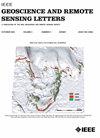Sea Clutter Suppression for Radar PPI Images Based on SCS-GAN
IF 4
3区 地球科学
Q2 ENGINEERING, ELECTRICAL & ELECTRONIC
引用次数: 12
Abstract
The problem of strong sea clutter, e.g., sea spikes, may bring in low signal-to-clutter ratio (SCR) and cause great interference to radar marine target detection. However, the sea clutter suppression ability of current algorithms is limited with poor generalization under complex marine environment. In this letter, a novel sea clutter suppression generative adversarial network (SCS-GAN) is designed and employed for marine radar plan-position indicator (PPI) images detection. The SCS-GAN is based on residual networks and attention module, which includes residual attention generator (RAG) and sea clutter discriminator (SCD). In order to expand the data sets and improve generalization ability, clutter-free data set A, simulated sea clutter data set B (containing five types of sea clutter distributions), and actual sea clutter data set C are constructed by means of simulation and acquisition of real radar returns. At last, the parameter, i.e., clutter suppression ratio (CSR) is designed for evaluating the sea clutter suppression performances of the proposed method and other denoising and clutter suppression methods including CBM3D, denoising convolutional neural network (DnCNN), FFDNet, and Pix2pix. After testing with actual data, it is proved that the SCS-GAN has faster clutter removal speed, stronger generalization ability, and at the same time marine targets in images are remained completely.基于SCS-GAN的雷达PPI图像海杂波抑制
强海杂波问题,如海尖波等,会带来较低的信杂比,对雷达海洋目标探测造成较大干扰。然而,在复杂的海洋环境下,现有算法抑制海杂波的能力有限,泛化能力差。本文设计了一种新的海杂波抑制生成对抗网络(SCS-GAN),并将其应用于船舶雷达平面图-位置指示器(PPI)图像检测。该算法基于残差网络和残差注意模块,残差注意发生器(RAG)和海杂波鉴别器(SCD)。为了扩展数据集,提高泛化能力,通过模拟和获取真实雷达回波,构建无杂波数据集A、模拟海杂波数据集B(包含五种海杂波分布)和实际海杂波数据集C。最后,设计了杂波抑制比(CSR)参数,用于评价该方法与CBM3D、去噪卷积神经网络(DnCNN)、FFDNet、Pix2pix等去噪和杂波抑制方法的海杂波抑制性能。经过实际数据的测试,证明了SCS-GAN具有更快的杂波去除速度和更强的泛化能力,同时能完整地保留图像中的海洋目标。
本文章由计算机程序翻译,如有差异,请以英文原文为准。
求助全文
约1分钟内获得全文
求助全文
来源期刊

IEEE Geoscience and Remote Sensing Letters
工程技术-地球化学与地球物理
CiteScore
7.60
自引率
12.50%
发文量
1113
审稿时长
3.4 months
期刊介绍:
IEEE Geoscience and Remote Sensing Letters (GRSL) is a monthly publication for short papers (maximum length 5 pages) addressing new ideas and formative concepts in remote sensing as well as important new and timely results and concepts. Papers should relate to the theory, concepts and techniques of science and engineering as applied to sensing the earth, oceans, atmosphere, and space, and the processing, interpretation, and dissemination of this information. The technical content of papers must be both new and significant. Experimental data must be complete and include sufficient description of experimental apparatus, methods, and relevant experimental conditions. GRSL encourages the incorporation of "extended objects" or "multimedia" such as animations to enhance the shorter papers.
 求助内容:
求助内容: 应助结果提醒方式:
应助结果提醒方式:


